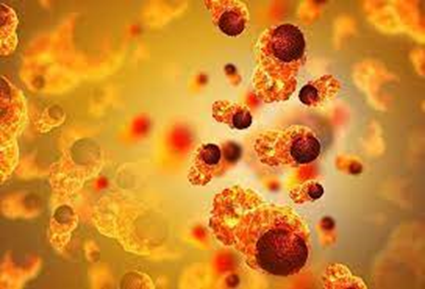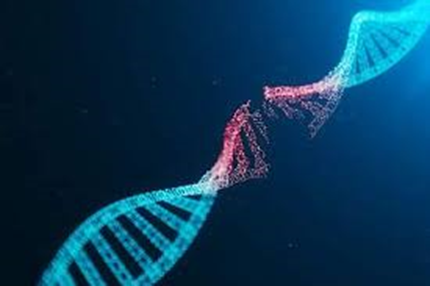Brucellosis
Overview
Brucellosis is a bacterial
infection that spreads from animals to people. Most commonly, people are
infected by eating raw or unpasteurized dairy products. Sometimes, the bacteria
that cause brucellosis can spread through the air or through direct contact
with infected animals.
Signs and symptoms of
brucellosis may include fever, joint pain, and fatigue. The infection can
usually be treated with antibiotics. However, treatment takes several weeks to
months, and the infection can recur.
Brucellosis affects
hundreds of thousands of people and animals worldwide. Avoiding raw dairy
products and taking precautions when working with animals or in a laboratory
can help prevent brucellosis.
Symptoms
Symptoms of brucellosis may show up anytime
from a few days to a few months after you have been infected. Signs and
symptoms are similar to those of the flu and include:
Fever
Chills
Loss of appetite
Sweats
Weakness
Fatigue
Joint, muscle and back pain
Headache
Brucellosis symptoms may disappear
for weeks or months and then return. Some people have chronic brucellosis and
experience symptoms for years, even after treatment. Long-term signs and
symptoms may include:
Fatigue
Recurrent fevers
Inflammation of the inner
lining of the heart chambers (endocarditis)
Joint inflammation
(arthritis)
Arthritis of the spinal
bones (spondylitis)
Arthritis of joints where
the spine and pelvis connect (sacroiliitis
When to see a doctor
Brucellosis can be hard to
identify, especially in the early stages, when it often resembles other
conditions, such as the flu. See your doctor if you develop a rapidly rising
fever, muscle aches or unusual weakness and have any risk factors for the
disease, or if you have a persistent fever.
Causes
Brucellosis affects many
wild and domestic animals, including:
Cattle
Goats
Sheep
Pigs and wild hogs
Dogs, especially those used
in hunting
Deer
Elk
Bison
Caribou
Moose
Camels
A form of brucellosis also
affects harbor seals, porpoises, and certain whales.
The most common ways
that bacteria spread from animals to people are by:
Eating raw dairy
products. Brucella bacteria in the milk of infected
animals can spread to humans in unpasteurized milk, ice cream, butter, and
cheeses. The bacteria can also be transmitted in raw or undercooked meat of
infected animals.
Inhaling contaminated
air. Brucella bacteria spread easily in the air. Farmers,
hunters, laboratory technicians and slaughterhouse workers can inhale the
bacteria.
Touching blood and
body fluids of infected animals. Bacteria in the blood,
semen or placenta of an infected animal can enter your bloodstream through a
cut or other wound. Because normal contact with animals — touching, brushing,
or playing — does not cause infection, people rarely get brucellosis from their
pets. Even so, people who have weakened immune systems should avoid handling
dogs that are known to have the disease.
Brucellosis normally does
not spread from person to person, but in a few cases, women have passed the
disease to their children during birth or through their breast milk. Rarely,
brucellosis may spread through sexual activity or through contaminated blood or
bone marrow transfusions.
Risk factors
While brucellosis is rare in
the United States, it is more common in other parts of the world, especially:
Southern Europe, including
Portugal, Spain, Turkey, Italy, Greece, Southern France
Eastern Europe
Mexico, South and Central
America
Asia
Africa
The Caribbean
The Middle East
Occupations at higher
risk
People who work with animals
or who come into contact with infected blood are at higher risk of brucellosis.
Examples include:
Veterinarians
Dairy farmers
Ranchers
Slaughterhouse workers
Hunters
Microbiologists
Complications
Brucellosis can
affect almost any part of your body, including your reproductive system, liver,
heart, and central nervous system. Chronic brucellosis may cause complications
in just one organ or throughout your body. Possible complications include:
Inflammation of the
inner lining of the heart chambers (endocarditis).
This is one of the most serious complications of brucellosis. Untreated
endocarditis can damage or destroy the heart valves and is the leading cause of
brucellosis-related deaths.
Arthritis.
Joint inflammation is marked by pain, stiffness and swelling in the joints,
especially the knees, hips, ankles, wrists, and spine. Inflammation of the
joints in your spine (spondylitis) or the joints linking the lower spine and
pelvis (sacroiliitis) can be particularly hard to treat and may cause lasting
damage.
Inflammation and infection
of the testicles (epididymo-orchitis). The bacteria that cause brucellosis can
infect the epididymis, the coiled tube that connects the vas deferens and the
testicle. From there, the infection may spread to the testicle itself, causing
swelling and pain, which may be severe.
Inflammation and
infections of the spleen and liver. Brucellosis can
also affect the spleen and liver, causing them to enlarge beyond their usual
size.
Central nervous
system infections. These include potentially
life-threatening illnesses such as inflammation of the membranes surrounding
the brain and spinal cord (meningitis) or inflammation of the brain itself
(encephalitis).;
Prevention
To reduce the risk of getting
brucellosis, take these precautions:
Avoid unpasteurized
dairy foods. In recent years in the United States, few
cases of brucellosis have been linked to raw dairy products from domestic
herds. Still, it is best to avoid unpasteurized milk, cheese and ice cream, no
matter what their origin. If you are traveling to other countries, avoid all
raw dairy foods.
Cook meat thoroughly. Cook a
whole cut of meat until it reaches an internal temperature of 145 F (63 C) and
let it rest for at least three minutes — a medium doneness. Cook ground meat to
160 F (71 C) — well done. Cook all poultry, including ground poultry, to 165 F
(74 C). When traveling outside of the United States, avoid undercooked meats.
Wear gloves. If
you are a veterinarian, farmer, hunter or slaughterhouse worker, wear rubber
gloves when handling sick or dead animals or animal tissue or when assisting an
animal giving birth.
Take safety
precautions in high-risk workplaces. If you work in a
laboratory, handle all specimens under appropriate biosafety conditions.
Slaughterhouses should also follow protective measures, such as separating the
killing floor from other processing areas and use of protective clothing.
Vaccinate domestic
animals. In the United States, an aggressive
vaccination program has nearly eliminated brucellosis in livestock herds.
Because the brucellosis vaccine is live, it can cause disease in people. Anyone
who has an accidental needle stick while vaccinating an animal should be
treated.
Jan Ricks Jennings, MHA,
LFACHE
Senior Consultant
Senior Management
Resources, LLC
JanJenningsBlog.Blogspot.com
412.913.0636 Cell
724.733.0509 Office
October 25, 2022










